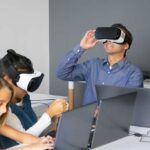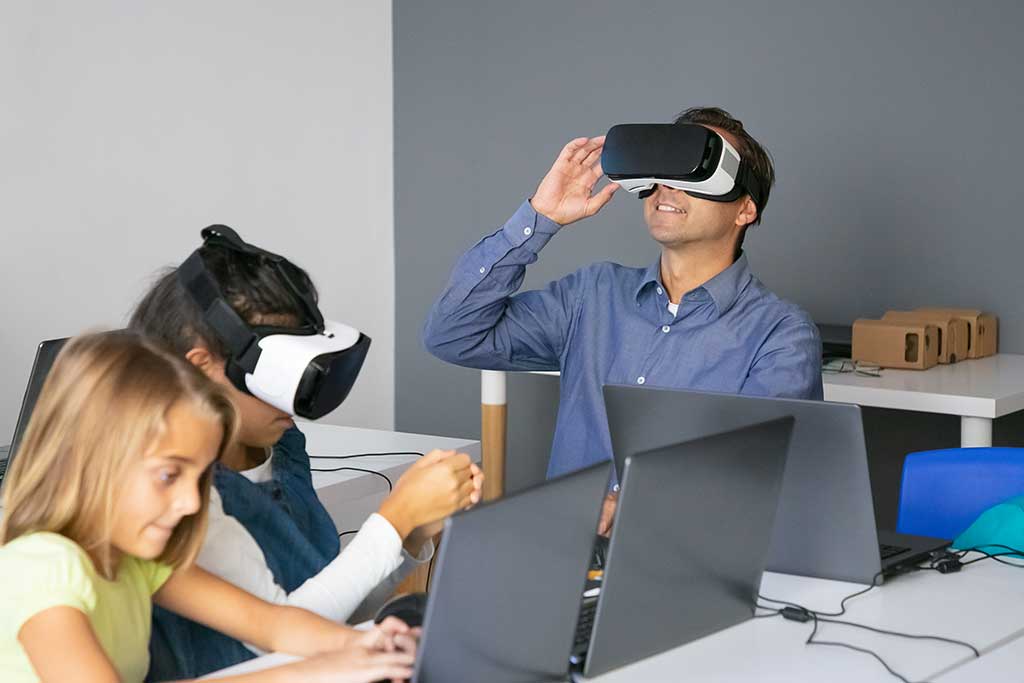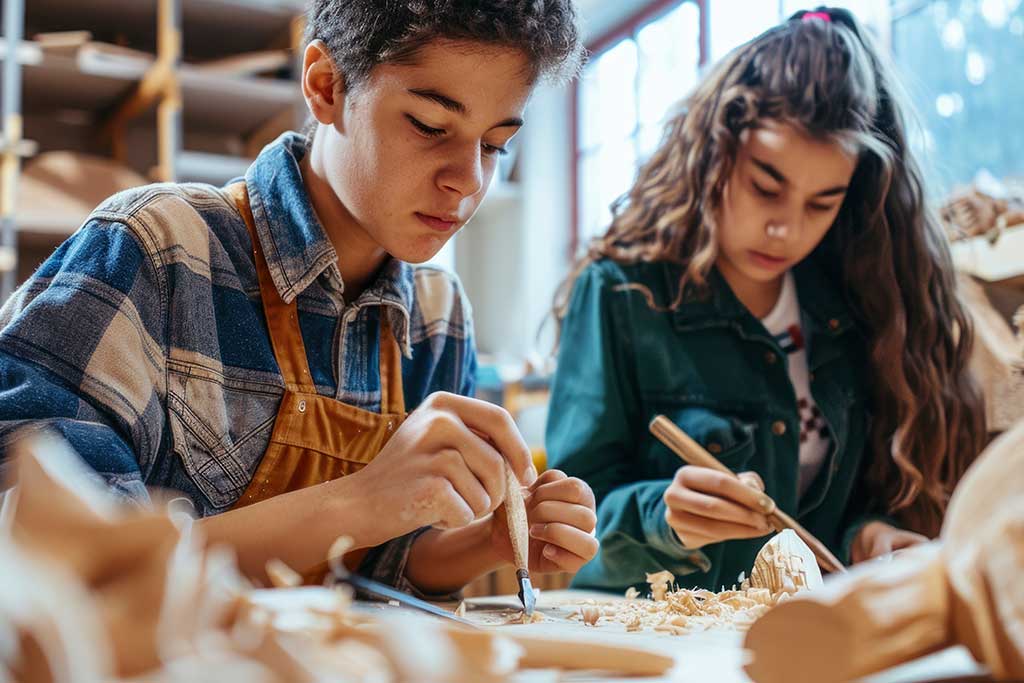Now Reading: A Simple Guide to Information Technology Gadgets
-
01
A Simple Guide to Information Technology Gadgets
A Simple Guide to Information Technology Gadgets

Information Technology gadgets are electronic devices that store, retrieve, and share information. From smartphones and laptops to routers and printers, they help us work, learn, communicate, and entertain ourselves. These tools have become essential in our daily lives, connecting us to the digital world and simplifying countless tasks for all age groups.
Have you ever wondered how you can video call your grandparents in a different state, watch a movie on your phone, or your father can work from home on his laptop? The magic behind all this is what we call Information Technology (IT) Gadgets.
In simple terms, an IT gadget is any electronic device that can store, retrieve, and share information. Think of them as tiny, smart helpers that make our lives easier, more fun, and more connected. From a child using a tablet for online classes to a grandparent reading news on a smartphone, these gadgets are now a part of our everyday life in India.
Let’s embark on a journey to understand the different types of these amazing gadgets that power our modern world.
1. Computing Devices: The Brainy Helpers
These are the powerful devices that do the heavy thinking. They are like the brain of our digital operations.
- Laptops: Imagine a complete computer that you can fold and carry in a bag! That’s a laptop. It has a screen, a keyboard, a touchpad (instead of a mouse), and a battery. Laptops are perfect for work-from-home (WFH) jobs, online studies, creating presentations, and watching movies. They are versatile and powerful.
- Desktops: This is the traditional computer that sits on a desk. It has a separate CPU (Central Processing Unit—the actual brain), a monitor (screen), a keyboard, and a mouse. Desktops are very powerful and are often used in offices, schools, and by people who need a lot of processing power for tasks like graphic design or gaming. They are not portable but are great for a fixed workstation.
- Tablets: Think of a tablet as a bridge between a smartphone and a laptop. It’s a flat, touchscreen device, bigger than a phone but smaller than a laptop. It’s excellent for reading e-books, watching videos, playing games, and attending online classes. Many parents in India give tablets to children for educational apps and entertainment.
In short: If you need to create something, study seriously, or work efficiently, you are likely using a computing device.
2. Mobile Devices: Your Pocket-Sized World
These gadgets have revolutionized the way we communicate and access information. They are our constant companions.
- Smartphones: This is probably the most common IT gadget in India today. It’s a mobile phone that does much more than just make calls and send messages. A smartphone is a camera, a calendar, a bank, a news source, an entertainment centre, and a shopping mall, all in your pocket. We use apps like WhatsApp, YouTube, and UPI payment apps (like PhonePe or Google Pay) to do almost everything.
- Smartwatches and Fitness Bands: These are wearable gadgets you strap to your wrist. They connect to your smartphone and show you notifications for calls and messages. But their superpower is health tracking. They can count your steps (like a modern pedometer), monitor your heart rate, track your sleep, and even measure your blood oxygen levels. They are like having a personal health coach on your wrist.
In short: Mobile devices keep us connected to people and information, no matter where we are.
3. Storage Devices: Your Digital Cupboard
Just like we need cupboards and drawers to store our clothes and books, we need storage devices to keep our digital files safe. These are the gadgets that save your photos, documents, videos, and music.
- Flash Drives (Pen Drives): These are small, portable devices that you can plug directly into a computer or laptop’s USB port. They are perfect for transferring files from one computer to another, like carrying your school project from home to the computer lab.
- External Hard Drives: These are like big, strong cupboards for your digital data. They are larger than pen drives and can store a huge amount of data—like your entire collection of family photos and videos for years. People use them to create a backup, which is a safety copy of their important data, in case their computer stops working.
- Memory Cards (SD Cards): These are tiny, flat cards that are used in cameras, smartphones, and drones to store photos and videos. When your phone says it’s running out of storage, it often means the memory card is full.
In short: Without storage devices, we would lose all our precious digital memories and important work files.
4. Networking Devices: The Invisible Connectors
How does the internet reach your laptop or phone? Through networking devices! They create the digital highways that connect our gadgets to the world.
- Modem: This is the device that brings the internet into your home. It connects to the internet cable coming from your service provider (like Airtel or Jio) and translates the signal so that your computers can understand it.
- Router: A router works with a modem. Its job is to take the internet connection and spread it wirelessly throughout your house as Wi-Fi. It’s like a traffic policeman for the internet, making sure your laptop, phone, and smart TV all get a smooth connection. Many modern devices combine a modem and a router into a single box.
In short: Networking devices are the unsung heroes that give us the power of Wi-Fi, allowing us to be online anywhere in our homes.
5. Input/Output Devices: The Messengers
These gadgets act as a bridge between you and your computer. They help you “talk” to the computer and allow the computer to “talk” back to you.
- Input Devices (How you talk to the computer):
- Keyboard: Used for typing text and commands.
- Mouse: Used to point, click, and select items on the screen.
- Output Devices (How the computer talks to you):
- Monitor (Screen): It displays the visual information from the computer. Without it, you wouldn’t see anything!
- Printer: It takes a digital document from your computer and creates a physical paper copy. It’s essential for printing everything from school assignments to official documents.
In short: Input and output devices make the interaction between humans and computers possible.
6. Multimedia Devices: For Our Ears and Eyes
These gadgets are all about creating and enjoying audio and video content. They make our digital experience richer and more entertaining.
- Digital Cameras: While smartphones have great cameras, dedicated digital cameras (like DSLRs and mirrorless cameras) are used by photography enthusiasts and professionals to capture high-quality photos and videos.
- Speakers: From the small speakers in your phone to large home theatre systems, these devices output sound. They are used for listening to music, watching movies, and enhancing the audio experience of any gadget.
- Headphones and Earbuds: These are personal speakers for your ears. They let you listen to audio privately without disturbing others, making them perfect for online classes, listening to music on the go, or watching videos in a crowded place.
In short: Multimedia gadgets add the vital elements of sight and sound to our digital world, making it more vivid and immersive.
Conclusion: A Connected Life
Information Technology gadgets are not just fancy electronics; they are powerful tools that have transformed how we live, learn, work, and play. From a student in a remote village attending an online class to a doctor in a city checking a patient’s reports remotely, these gadgets are bridging gaps and creating new possibilities for everyone in India.
The next time you use your smartphone to pay at a Kirana store or your laptop to join a family celebration over a video call, take a moment to appreciate the wonderful world of IT gadgets that makes it all happen. They are the building blocks of our modern, connected world.
Stay Informed With the Latest & Most Important News
Previous Post
Next Post
-
 01Does Free Money Exist? The Real Story of How Your Passive Income Gets Taxed in India
01Does Free Money Exist? The Real Story of How Your Passive Income Gets Taxed in India -
 02Beyond the First Rupee: Building Your Personal System for Passive Income Success in India
02Beyond the First Rupee: Building Your Personal System for Passive Income Success in India -
 03Your Journey to Financial Freedom: A Simple Guide to Building Passive Income in India
03Your Journey to Financial Freedom: A Simple Guide to Building Passive Income in India -
 04Your Extra Income Journey: Top Side Hustles to Boost Your Earnings in India
04Your Extra Income Journey: Top Side Hustles to Boost Your Earnings in India -
 05The Right Way for Kids to Learn Technology: A Guide for Indian Parents
05The Right Way for Kids to Learn Technology: A Guide for Indian Parents -
 06A New World at Your Fingertips: A Simple Guide to Technology Tutorials for Seniors
06A New World at Your Fingertips: A Simple Guide to Technology Tutorials for Seniors -
 07Your Guide to Learning Technology in 2025: Simple, Smart, and Effective
07Your Guide to Learning Technology in 2025: Simple, Smart, and Effective
































